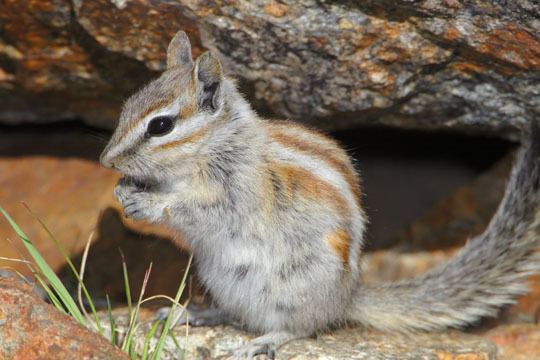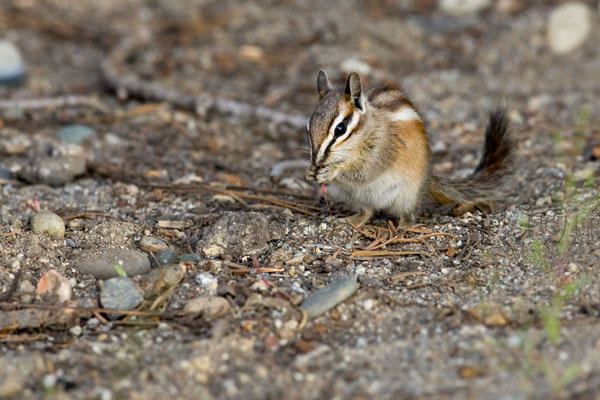Genus Tamias Higher classification Chipmunk | Phylum Chordata Family Sciuridae Scientific name Tamias alpinus Rank Species | |
 | ||
Similar Lodgepole chipmunk, Chipmunk, Red‑tailed Chipmunk, Panamint chipmunk, California chipmunk | ||
The alpine chipmunk (Tamias alpinus) is a species of chipmunk native to the high elevations of the Sierra Nevada of California.
Contents

Description

Alpine chipmunks share the typical pattern of genus Tamias, being gray-brown overall and featuring three white stripes on the cheeks and four down the back. The flanks are muted orange. Overall the pattern is much paler compared to most species. They weigh 27-45 grams.
Distribution

Alpine chipmunks only live in high Sierra Nevada, from Yosemite National Park in the north, to Olancha Peak in the south. They have been observed at altitudes from around 2,300 meters (7,500 ft) to 3,900 meters (12,800 ft), though they rarely occur below 2,500 meters (8,200 ft).
Behavior and ecology

The alpine chipmunk feed on the seeds of sedges, grasses, and other plants in their namesake alpine zone. They generally eat their food on the ground. They do not generally require a source of water other than food, but will use it given the opportunity.

They nest in crevices between rocks, taking advantage of the micro-climatic conditions (i.e. higher temperatures) that exist there. Their young are born in June and July, in litters of 3-6.

They are considered diurnal, though they exhibit some nocturnal activity during the summer. They hibernate from November through April, frequently awakening to eat.
